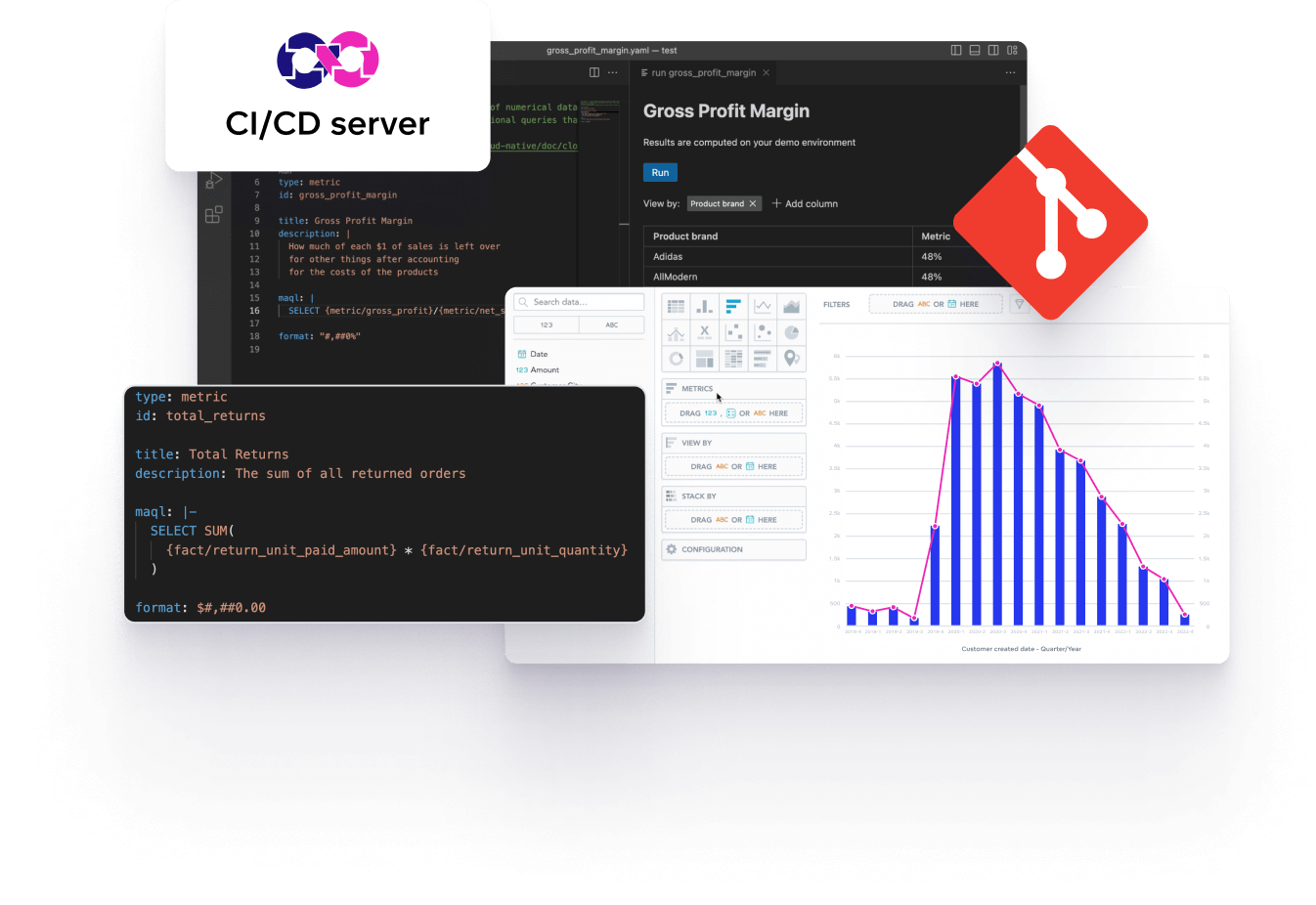
Will your analytics stand the test of time?
In the fast-moving world of data analytics, outdated practices can leave your organization lagging behind.
Are your analytics ready for the future? Or do they have one foot in the past? Take our quiz to find out!

AI integration
Are your analytics AI-powered?
- AYes, we’ve extensively integrated advanced AI capabilities.
- BWe’re using several AI features, and constantly adding more.
- CWe currently have limited AI usage, still exploring options.
- DAI can be used in analytics?


AI-fueled solutions revolutionize data exploration for users and can streamline analytics set up.
AI integration
Why your analytics should be AI-powered.
- AYes, we’ve extensively integrated advanced AI capabilities.
- BWe’re using several AI features, and constantly adding more.
- CWe currently have limited AI usage, still exploring options.
- DAI can be used in analytics?
With AI:
- Users can use Natural Language (NL) to get AI-powered insights.
- Platform setup/maintenance becomes easier for developers and engineers.
Without AI:
- Users may miss insights and find it more difficult to make sense of data.
- Platform setup will be less efficient and more expensive.
- AYes, we’ve extensively integrated advanced AI capabilities.
- BWe’re using several AI features, and constantly adding more.
- CWe currently have limited AI usage, still exploring options.
- DAI can be used in analytics?
With AI:
- Users can use Natural Language (NL) to get AI-powered insights.
- Platform setup/maintenance becomes easier for developers and engineers.
Without AI:
- Users may miss insights and find it more difficult to make sense of data.
- Platform setup will be less efficient and more expensive.
GoodData’s FlexAI chat assistant allows users to question the data.
Scalability
How scalable is your analytics solution?
- AHighly scalable and multitenant.
- BFairly scalable with some limitations.
- CIt struggles with scalability.
- DWe can’t scale. Period.


Scalability is your system’s ability to query large amounts of data and distribute analytics to a growing user base.
Scalability
How to ensure your analytics solution is scalable.
- AHighly scalable and multitenant.
- BFairly scalable with some limitations.
- CIt struggles with scalability.
- DWe can’t scale. Period.
A scalable analytics solution:
- Allows you to deliver analytics to many tenants via a single platform.
- Tends to use the per-workspace pricing model.
An unscalable analytics solution:
- Is usually single-tenant, serving only one customer.
GoodData’s multi-tenant architecture is key to scalability.
Headless BI
Does your analytics solution leverage Headless BI?
- AYes, our solution is completely headless with open APIs.
- BIt’s partially headless, but with some limitations.
- CIt’s not headless, we’re dependent on specific tools.
- DI’m still not sure what Headless BI means.


A headless approach allows data tools to access your platform via open APIs, SDKs, and standard protocols.
Headless BI
Why you should take a headless approach.
- AYes, our solution is completely headless with open APIs.
- BIt’s partially headless, but with some limitations.
- CIt’s not headless, we’re dependent on specific tools.
- DI’m still not sure what Headless BI means.
With a Headless BI solution:
- End users can connect to any tool they choose.
- Engineers can make changes without breaking end-user metrics and tools.
Without a Headless BI solution:
- Future hours will be spent training on new tools and explaining the data.

GoodData’s Headless BI allows easy integration with other tools.
Analytics as Code
Does your solution take an Analytics-as-Code (AaC) approach?
- AYes, we’ve fully implemented AaC with tools like GitHub/GitLab.
- BWe partially take an AaC approach, but not fully.
- CWe’re aware of AaC, but are yet to implement.
- DWhat’s AaC?


AaC is the future of analytics management. Develop and express analytics objects and functionalities through code!
Analytics as Code
Why you should take an Analytics as Code approach.
- AYes, we’ve fully implemented AaC with tools like GitHub/GitLab.
- BWe partially take an AaC approach, but not fully.
- CWe’re aware of AaC, but are yet to implement.
- DWhat’s AaC?
With AaC:
- Developers/engineers can easily maintain version control of the analytics.
- You can leverage CI & CD pipelines to create analytics environments fast.
Without AaC:
- Your analytics solution will struggle to align with modern DevOps practices.

GoodData’s VS Code Extension allows you to manage analytics via code.
Composability
Do you utilize a composable analytics framework?
- AOur analytics are composable with microservices architecture.
- BOur framework is partially composable; we’re exploring options.
- CNo, but it’s in the pipeline.
- DComposable analytics?


Composable analytics provides users with the flexibility to create their own analytics experience.
Composability
Why you need a composable analytics framework.
- AOur analytics are composable with microservices architecture.
- BOur framework is partially composable; we’re exploring options.
- CNo, but it’s in the pipeline.
- DComposable analytics?
With composability:
- You can efficiently convert insights into actions.
- Seamlessly develop and deploy cloud-native applications.
Without composability:
- Self-service analytics becomes difficult, increasing work for IT departments.

GoodData’s composable data and analytics framework utilizes a microservices-based architecture.